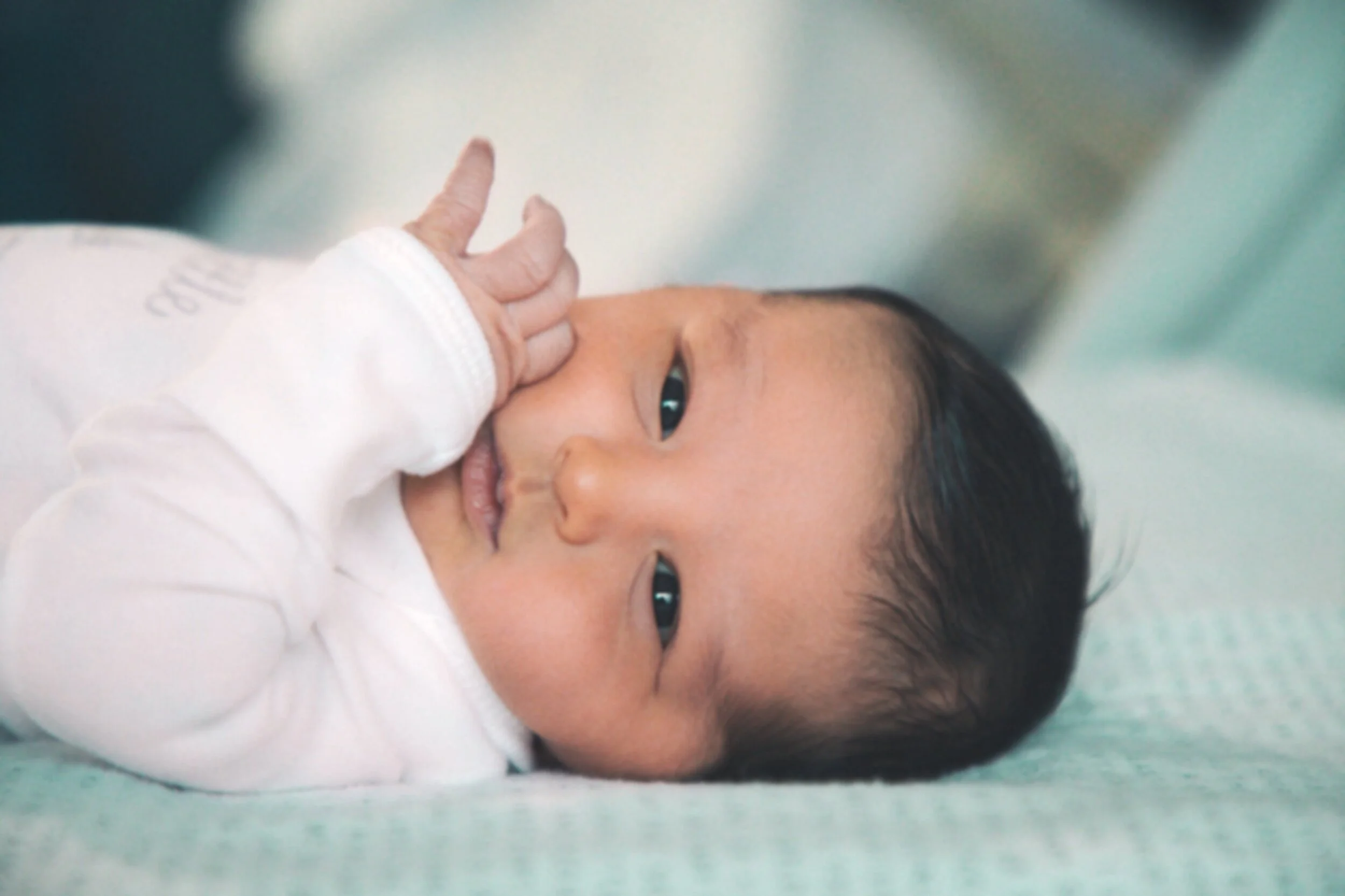When Baby Favors Turning Their Head One Direction
Two out of three of my own babies have had head-turning preferences. Positional preferences like this are VERY common in newborns and - fun fact - right-turning is more common than left-turning.
Were you even aware that this was a "thing?" If not, you're not alone.
Let’s talk about head-turning preferences; not to scare you or make you obsessively check your baby’s head position, but because if you can catch this little newborn quirk early, it tends to resolve very quickly and easily with some simple tweaks. Unnoticed and unaddressed, favoring one side over the other can quickly snowball into longer-term and harder to treat conditions and complications.
I hope to equip you (and other parents you share this information with) to nip head-turning preferences in the bud to give your little one the healthiest start possible!
Why Babies Have Head-Turning Preferences
Newborns don't have the strength and coordination to hold their heads in the center of their bodies. When on the back, your little one's noggin will naturally flop to the side until they gain that strength - often by the third month. It's easy to see, then, how in the critical early weeks of your baby's life, even slight imbalances of muscle tightness or weakness can dramatically affect which direction your baby's head flops toward (their positional preference).
Gravity has an even bigger effect on head position when baby is supported in a semi-reclined position as in most Baby Holding Devices. Positional preferences are easily exacerbated and prolonged when baby spends time in baby gear which is one of the biggest reasons I recommend parents use gear in moderation.
Why do so many newborns have muscle tightness or weakness of the neck and/or torso? While there are several more severe causes, by far the most common culprits are womb positioning and minor birth trauma to muscles. So rest easy, fellow parents, you aren't to blame for your little one's head-turning preference. But without the full scoop on this condition, you might unknowingly be making it worse...
Why Your Baby's Position Preferences Matter
It makes sense that a baby who spends more time looking in one direction will have a greatly increased chance of developing Flat Head Syndrome (positional or deformational plagiocephaly) on that side of the back of the head.
Head-turning preferences that are more significant or don't resolve in baby's early weeks are a red flag for more significant neck tightness called Torticollis. This condition most often requires therapy intervention to treat.
As a child development nerd I am in awe of how interconnected all the different areas of a baby's development are. But that amazing interconnectedness also means that uncorrected head-turning preferences can lead to decreased use of one arm, decreased visual scanning abilities, unbalanced motor skills like only rolling to one side or unbalanced sitting posture, and more.
Checking For Head-Turning Preferences
The easiest way to catch a head-turning preference is to simply be aware that they exist and observe your baby.
But another tip I share in my book The Flat Head Syndrome Fix is to take a few minutes to scroll through photos of your baby on your phone, camera or computer. Scroll quickly and pay attention to one thing only - your baby's head position. Look for any recurring head tilt (ear toward shoulder) and/or turn (chin toward one shoulder).
What Can You Do If You Notice A Preference?
Rather than ramble on in a super-long blog post about strategies to help your baby work out of a head-turning preference, I've put together a free eBook for you! In it, I describe simple ways to encourage neck stretching and strengthening as well as red flags that your baby might need some gentle therapy to work out of muscle imbalances.
As always, make sure to discuss any developmental concerns, including positional preferences, with your baby's doctor.
How Our Babies Overcame Head-Turning Preferences
Using the strategies I share in the eBook, we were able to help our son work completely out of his slight left head-turning preference by 3 months of age with no developmental or head shape complications.
My middle kiddo had a more distinct positional preference that took more effort and time to address with the strategies in the eBook. At 3 months old, we only saw it during sleep and when placed semi-reclined in baby gear (which we use in moderation) and by 5 months positioning was symmetrical and her head shape was too.
The Flat Head Syndrome Fix
available in paperback and eBook




